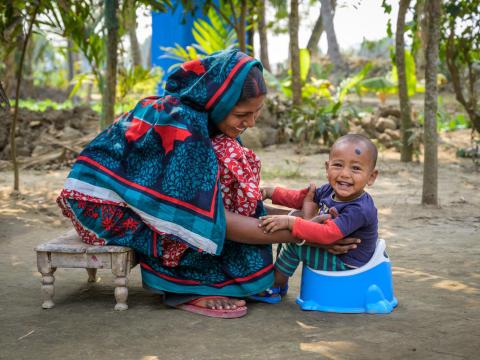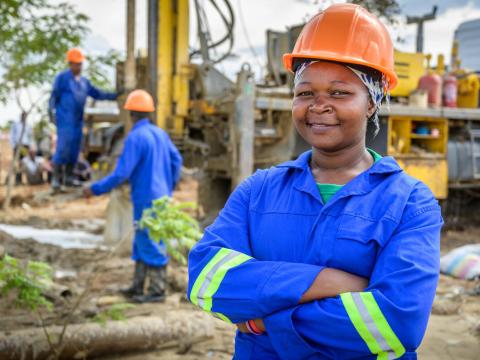
What does quality water service really mean?
Adam Questad, a Senior WASH Engineer at World Vision, considers why a culture of quality is imperative for supplying people with reliable water sources.
3 March, 2023
The Sustainable Development Goals have prompted development organisation strategy shifts from hand pumps to more robust piped-water systems, to relieve women and girls of the time burden of walking long distances to retrieve water and to increase the amount of water available for household use. However, not all piped water systems continue to deliver water when it’s needed most, often due to insufficient design or lack of maintenance.
Approximately 1 billion people in low- and middle-income countries are estimated to rely on piped-water systems that do not provide consistent water service throughout the day. The inconsistent delivery of water can lead to faster breakdown of water system components, contaminate water, and can complicate community relations due to the inequitable distribution of water.
World Vision’s 2021-2025 Global Water, Sanitation, and Hygiene Business Plan emphases shifting water service to piped-water systems. We are focused not only on providing water access but providing a quality delivery service designed to set the foundation for strong long-term governance and reliability. While the quality of water is a very important consideration, we also consider quality as a measure of how easy the system is to construct using locally available resources, how easy it is to maintain and repair, and how long the system provides reliable water to all community members, including the most vulnerable.
So how does World Vision keep the water running?
To encourage the adoption of country-specific quality practices adapted to each context and climate, World Vision is fostering a Culture of Quality that is lived by each World Vision employee. This includes:
- Outlining a harmonised infrastructure design and quality assurance approach with flexibility to be adapted for each country
- Encouraging discussions around quality including the true cost and time required to deliver high quality services
- Creating opportunities for our staff to share lessons learned across countries and regions to leverage our global expertise effectively
- Collecting data on our quality control practices and the functionality of water systems to continually improve our approaches
So why does this matter?
In practice, a successful Culture of Quality means that World Vision will continue to build water systems that:
- Are accessible equally to everyone through partnership in the design and development process by vulnerable stakeholders including women, girls, and people with disabilities
- Deliver enough clean water equitably to all locations throughout the day using design software that optimizes the size of pipes and locations of valves, as well as water quality monitoring and treatment when necessary
- Are easily constructed, maintained, and governed through consultation with local contractors, mechanics, and technicians
- Are reliable over the long-term through thoughtful design approaches that use data to understand and account for changing climatic conditions
Working with communities, government, and private operators to establish governance strategies for water systems is a crucial component to the sustainability of these services. But these governance strategies are bolstered by good design, construction, monitoring, data collection, and quality practices.
Not only does a Culture of Quality promote reliability and sound stewardship of funds, but it means that water provided today is likely to continue flowing for generations to come.
Read more about World Vision's water, sanitation and hygiene work by clicking here, and why not sign up to receive the occasional email on WASH topics below.
Adam Questad is a Senior WASH Engineer at World Vision US. He works with colleagues to foster a culture of quality and develop necessary systems, messaging, and capacities to promote innovation and define a harmonised approach to quality WASH service delivery.


